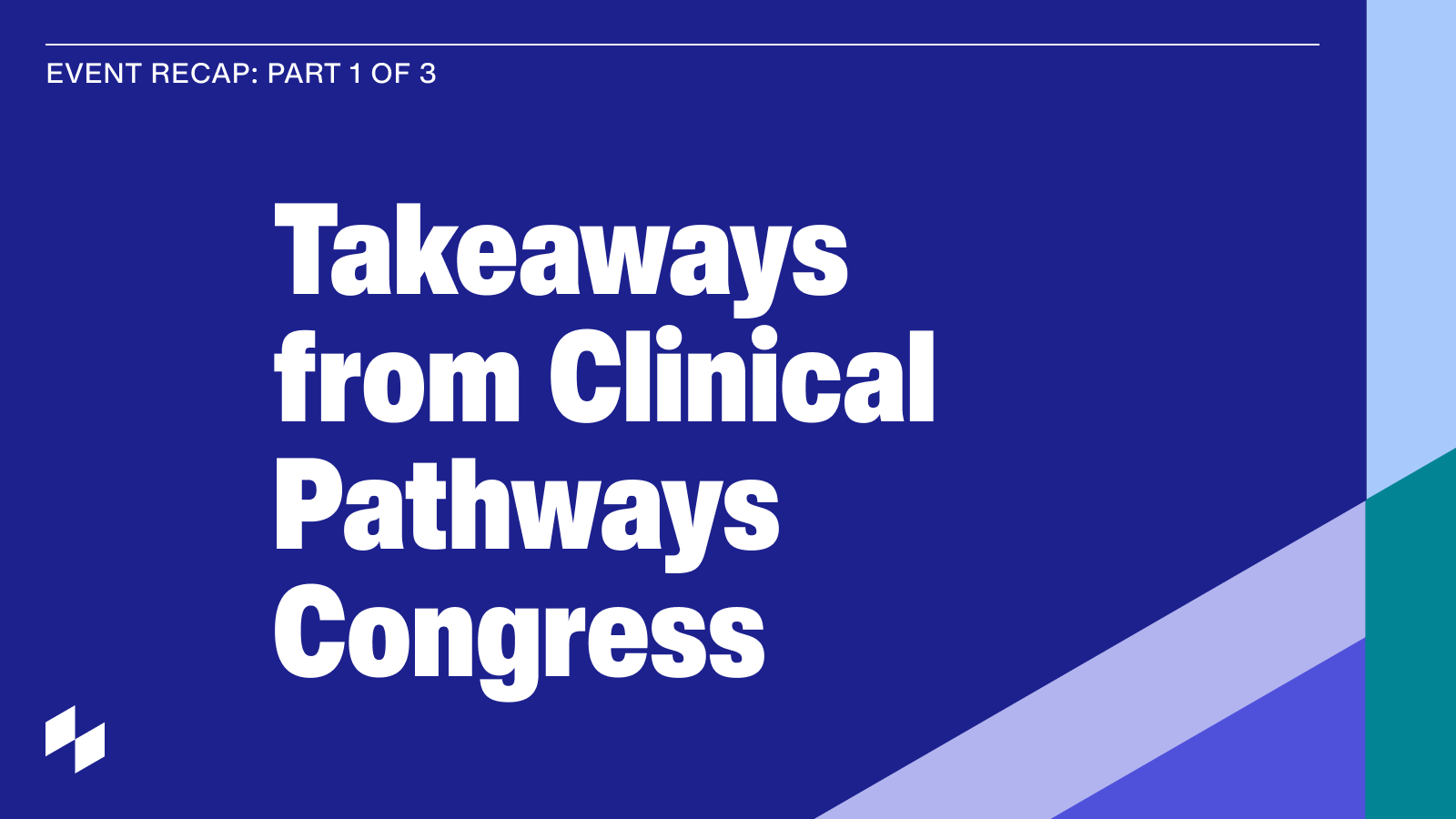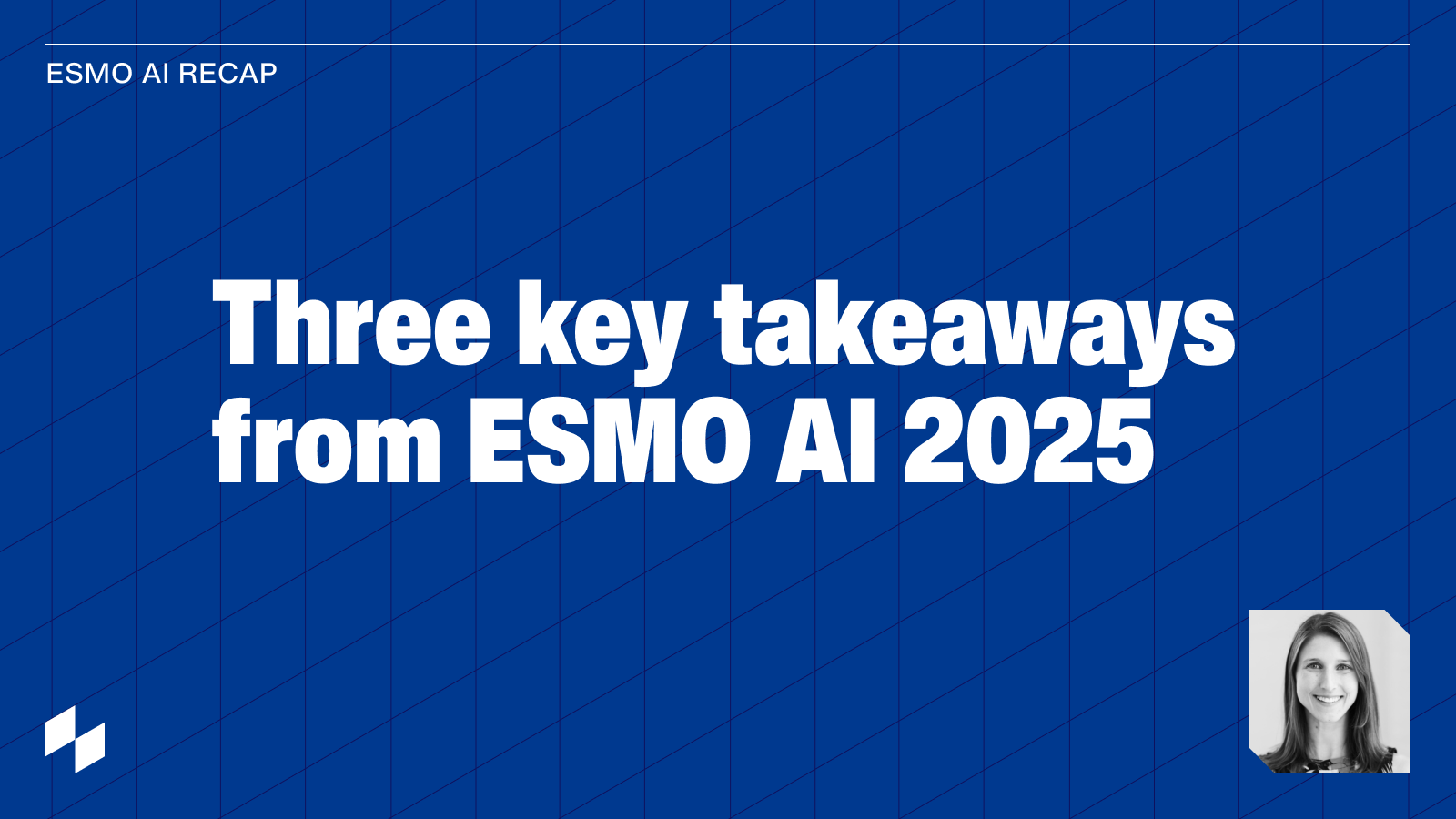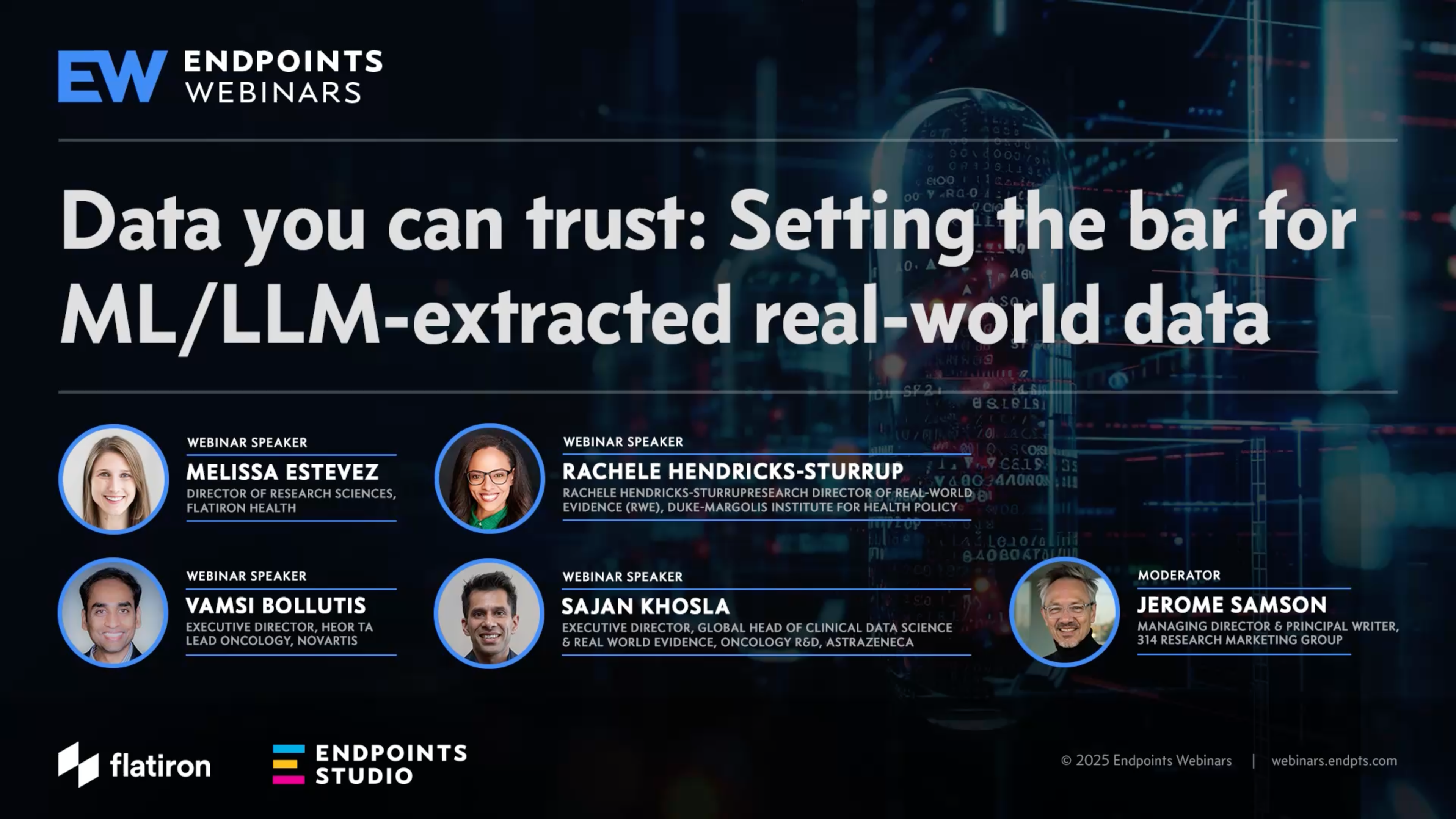Artificial intelligence has quickly become a dominant topic of discussion among those with an interest in healthcare technology, and oncology is positioned to be one of the biggest beneficiaries of AI’s ability to ingest and analyze huge volumes of information in increasingly sophisticated ways. With all the excitement around rapid progress in the AI space, it’s no wonder that there is a lack of clarity around what’s currently possible with AI – and what our goals should be for this powerful technology in the future.
At the Clinical Pathways Congress held in Boston in October of 2023, experts from Flatiron Health, Memorial Sloan Kettering Cancer Center, Cardinal Health, and Elsevier took to the stage to break down the myths surrounding AI in cancer care. Below are a few of the most compelling themes that emerged during this discussion.
Myth: Generative AI is a brand new concept that is only just being applied to real-world challenges.
Fact: Generative AI already powers some of our most familiar digital capabilities.
Generative AI is a type of artificial intelligence that can produce new content, including text and images, by drawing on patterns it learned after ingesting large amounts of training data.
ChatGPT and Midjourney are two of the most famous examples that have emerged in the past few years, but generative AI itself has a much longer history. For example, the autocorrect and predictive text functions on our smartphones are a form of generative AI that has been deeply ingrained into the digital experience for years.
In cancer care, we are building on these concepts to broaden the type of questions we want to answer and leverage AI tools to better equip and help assist physicians. For example, at Flatiron we are using purpose built machine learning algorithms to extract critical oncology information - such as a breast cancer diagnosis - from unstructured documents, which we’ve seen can outperform commercial general purpose Large Language Models (LLMs). In the long run, this supports more precisely targeted, effective and safe, personalized medicine by enabling us to truly learn from the experience of every person with cancer - a founding part of our mission at Flatiron Health.
Myth: AI is easy to train and ready to take on care challenges independently.
Fact: AI still requires careful training and ongoing involvement from skilled clinicians to perform at its highest level.
The majority of developers will agree that we’re not at science fiction-levels of AI sophistication just yet. But we can get there faster by making sure we have high quality "ground truth" datasets that allow us to properly validate model performance and minimize bias in our models. That means leveraging human clinical expertise to label data correctly so algorithms can be calibrated against reliable information.
At Flatiron, our training data is based on more than 10 years of expert human clinical abstraction, during which time leading oncologists and our expert clinical abstraction team have combed through charts to identify and label important variables, such as cancer stage and biomarker status. Without this high quality, expert-curated data corpus, it would be impossible to build AI models that we can trust.
Even with the best possible training data, everyone on the panel agreed that oncologists still need to be actively involved in reviewing AI recommendations and use their clinical judgment to make decisions with patients.
Myth: Artificial intelligence will replace oncologists and fully automate care delivery.
Fact: AI is a tool with many exciting use cases, but it’s not designed to be a replacement for oncologists.
AI isn’t going to be putting oncologists out of work any time soon. In fact, that’s not the goal of artificial intelligence at all. Instead, AI tools are being designed to support the irreplaceable clinical mind with capabilities that allow oncologists to scale their capacity, come to the right conclusions faster, and build stronger relationships with patients.
During the session, panelist Zachary Taft from Memorial Sloan Kettering Cancer Center shared that clinicians are using AI to make sense of lengthy, fragmented patient files from people who have already seen a number of other providers. It may be almost impossible for a single clinician to comb through thousands of pages of documents, but AI can abstract the most relevant data and assemble a longitudinal portrait of that patient’s care so that oncologists can quickly understand the individual needs of that patient.
Other AI use cases, such as reading imaging tests, surfacing care recommendations based on national guidelines, or suggesting text responses to patient messages, also have the potential to help oncologists practice more efficiently and effectively – not do the job for them.
AI is turning into a true partner for high-quality oncology care, but it’s a process that will take time, collaboration, and clarity around shared goals and achievements. By debunking some common myths about where we are and we’re going, we can clear the way for even faster progress and better results from these sophisticated technologies.




